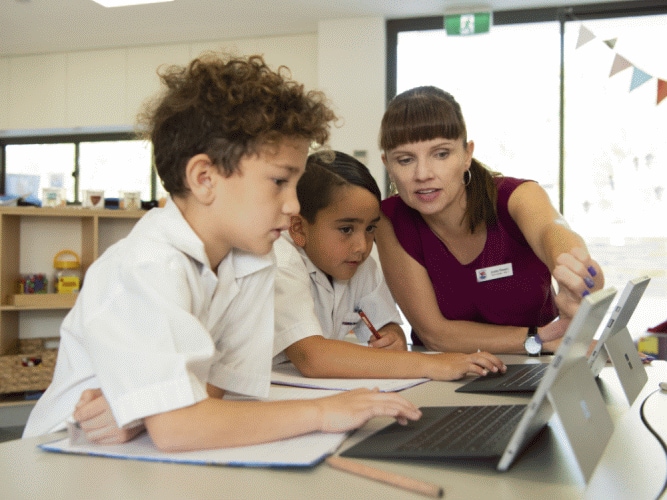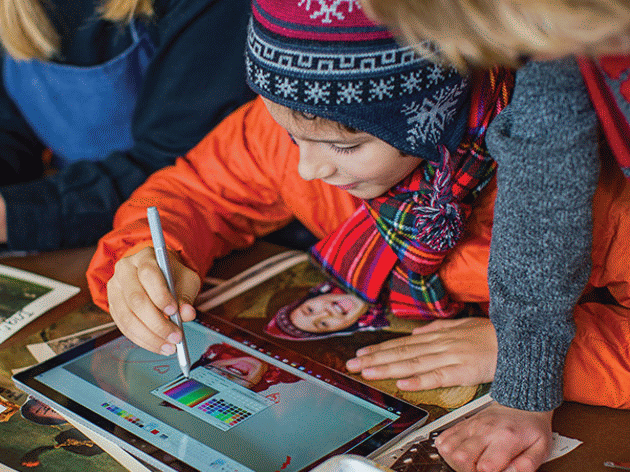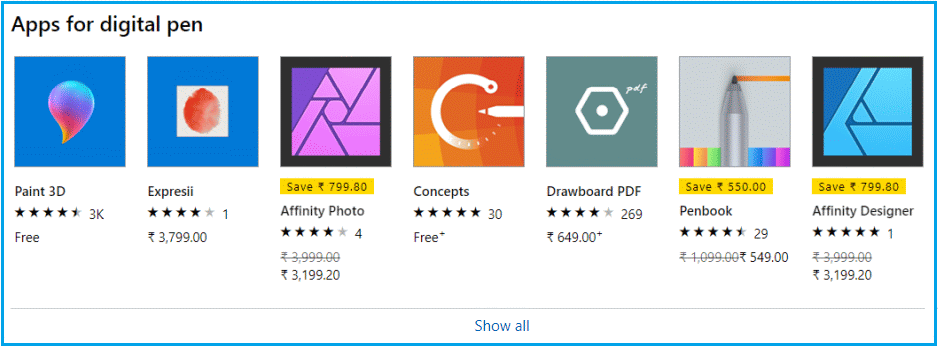Technology is quickly replacing traditional teaching methods. A school or college classroom can now have a projector, to replace black boards while laptops and tablets replace heavy books. Mathematic equations and diagrams can now be more interactive and less time-consuming to explain. Google Earth could be used to point out different parts of the world rather looking at dull maps. All of this should make the schooling more exciting for students of all ages.
The benefits extend to educators too, as teachers can share notes or snip diagrams and images to teach, use web tools to get up-to-date syllabus, while students access them immediately. Students can even interact with teachers one-on-one for any queries and have them answered in moments. These are still early days and India is making small steps towards that direction. At the heart of all this, are digital inking devices, a term used to describe touchscreen laptops and tablets bundled with stylus’.

International Data Corporation (IDC) did a report on digital inking devices in classrooms. The survey conducted in June 2015 stated that 98 per cent of classrooms in the US used laptops or tablets for learning. During the survey, around 10 per cent of classrooms used touch-screen devices, 75 per cent of these had keyboards attached while 25 per cent used devices with a stylus.
Another report, done by Microsoft on the Hillcrest Christian College found that students aged between and 18 found touchscreens to be more fun and interactive. The college is recognized to be one of the innovative schools around with some 1400 students. Microsoft’s Surface devices were at the heart of this transformation.
Children use Microsoft’s Surface devices to draw pictures using software like Fresh Paint and Colorist, while older students use FluidMath for handwritten math, but in innovative ways. The Microsoft App store has more digital pen software that have helped replace pens and notebooks, encouraging students to take the interactive, digital route. Arts, doodling and sketching are just some of the activities that Digital Ink enables.
Even college students can take notes, edit and highlight important word documents using simple touch gestures. For students who find Math as a difficult subject, the maths assistant feature in OneNote acts like a teacher to help them solve equations and even graph the results using a digital pen. Also, when teachers assign students to make PowerPoint presentations for science projects, students can use digital pens to compile them. A touchscreen display with a digital pen can help design students create free-hand artwork and designs anytime, anywhere.

According to IDC, 90 per cent of educators believed that the use of touchscreens and stylus devices improved student engagement, not to ignore the fact they’re also comfortable and convenient to carry and use.
Digital learning is no longer bound to classrooms; there are online tools and services offering freedom and accessibility for self-learners. This is particularly beneficial to full-time professionals who want to update their skills but can’t attend traditional classes and courses. Udemy has one of the largest selection of courses online across different categories for all kinds of older students, and professionals. Another example is Next Education that provides academic solutions right from preschool, primary to secondary and senior secondary school curriculum. Simplilearn and Intellipaat are others that offer professional, self-take online training courses and certifications, where students can download notes, highlight areas of interest, watch video tutorials and share them with classmates. Though, student-teacher engagement in online learning can be a gap, digital learning offers some benefits. According to IDC, 75 per cent educators believed that digital ink increases the quality of instructions as well as communication between educators and students.
Technology has the capability of revolutionizing the education space. Using Microsoft Surface devices with an active stylus gives students, the flexibility of a pen and paper but using smart and modern methods. India is a vast country with a large population. Introducing the concept of digital learning in schools and colleges might be the first few steps, but they can influence and accelerate the way we educate the generations to come.




